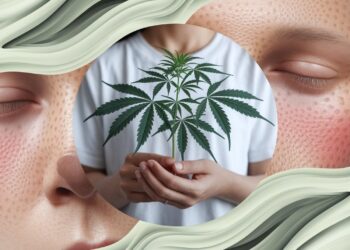More people are turning to topical THC creams, balms, and lotions for natural pain relief, without the high. These products are gaining popularity, but they’re not without potential risks.
You deserve real answers, not hype or fear. That’s why this article focuses on the actual side effects of putting THC on your skin. We’ll explain what reactions to watch for, who should steer clear of these products, and when it’s time to call a doctor.
This information comes from medical research and expert insights, not marketing claims. Our goal is to help you make informed, safe choices for your health.
By the end, you’ll clearly understand the risks, benefits, and warning signs linked to topical THC use. Whether you’re considering it for joint pain or inflammation, you’ll know if it’s a smart option for your body and your needs.
Common Side Effects of Topical THC Products
Your skin may not react well to THC products as you hope. Let me break down what happens to real people.
Skin-Related Reactions
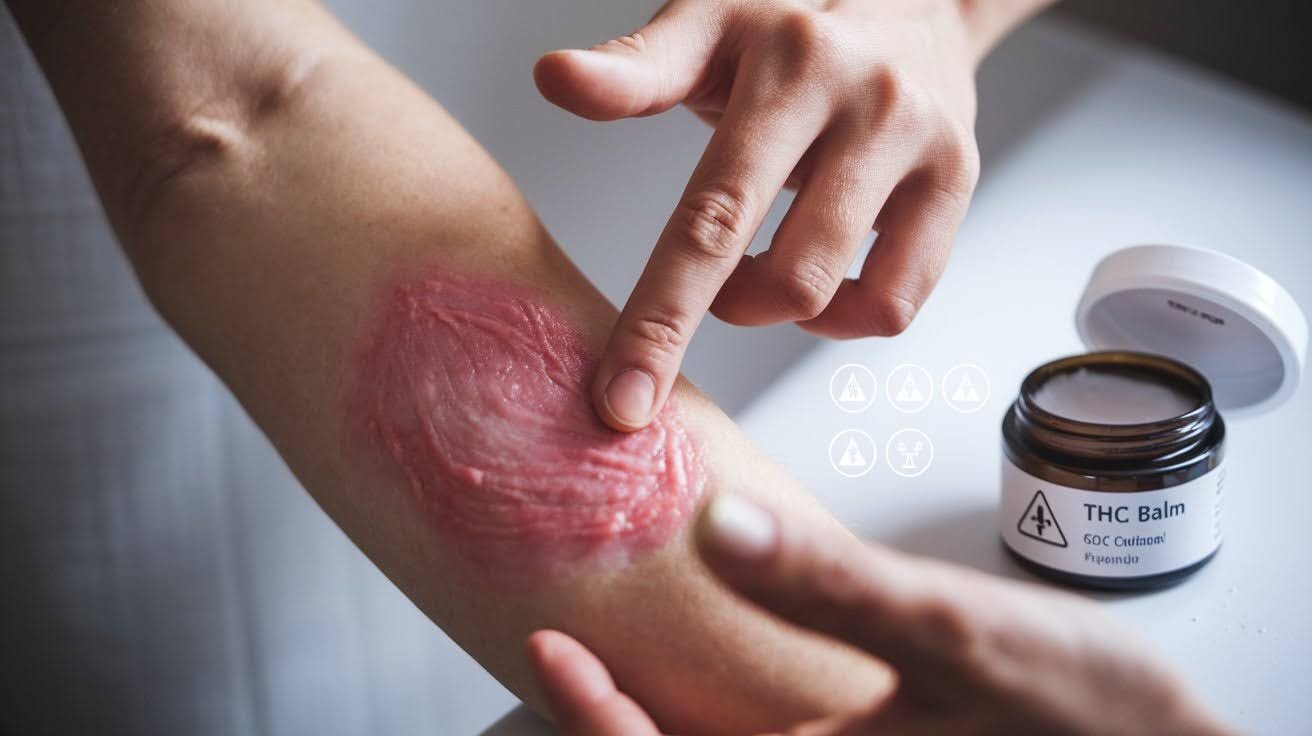
Localized irritation and contact dermatitis are the most common complaints. This means your skin gets angry right where you apply the product. Redness and inflammation show up fast. Sometimes within hours. Your skin looks like you got a mild sunburn in that exact spot.
Itching and rash development come next. Some people scratch until they bleed. Not fun when you’re trying to feel better. Here’s the tricky part: Allergic reactions can happen to the THC itself or other ingredients. Coconut oil, essential oils, preservatives – any of these could trigger problems.
Sensitivity Variations Among Users
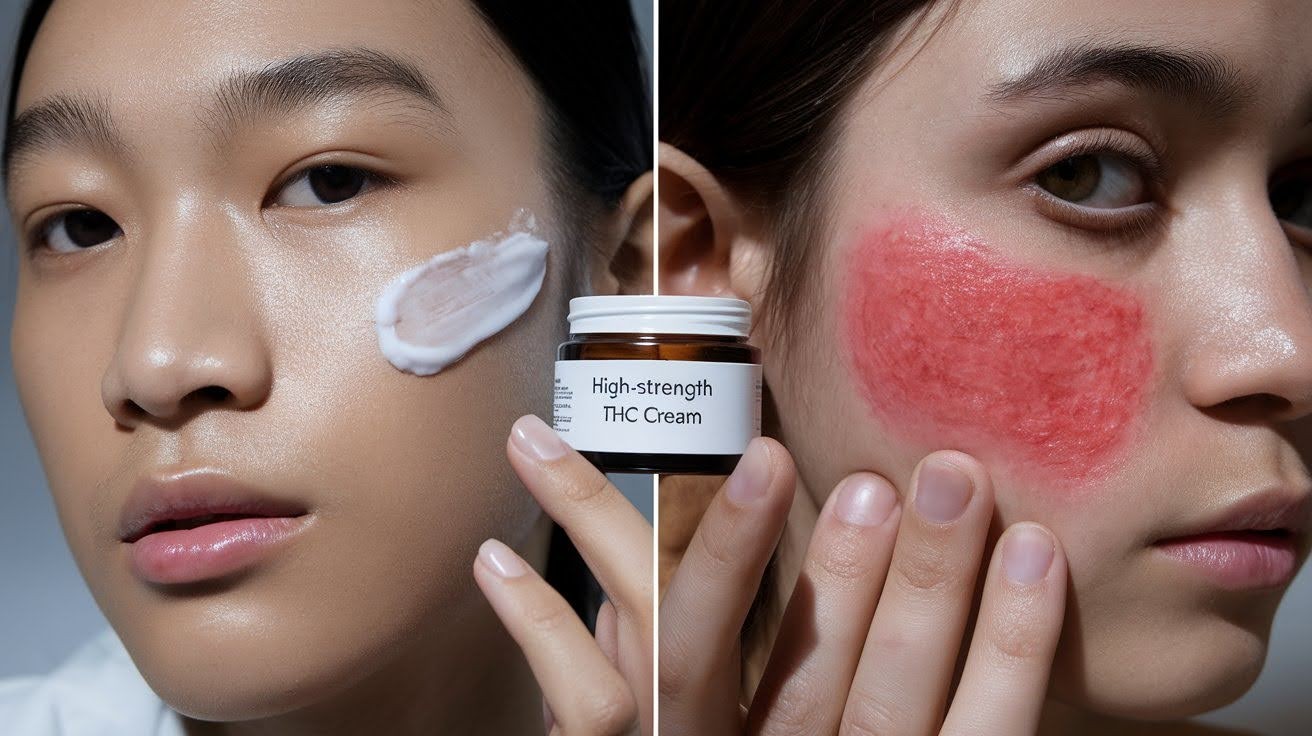
Not everyone reacts the same way. Your skin is different from mine. Individual skin sensitivity varies wildly. What gives me a rash might not bother you at all. Several factors make reactions worse:
- Your natural skin type
- How strong the product is
- How often do you use it
Higher risk hits people with existing skin conditions. Eczema, psoriasis, or sensitive skin? You’re more likely to have problems. The concentration matters too. Stronger products cause stronger reactions. Start small and see how your skin responds first.
Mild Intoxicating Effects (Rare Cases)
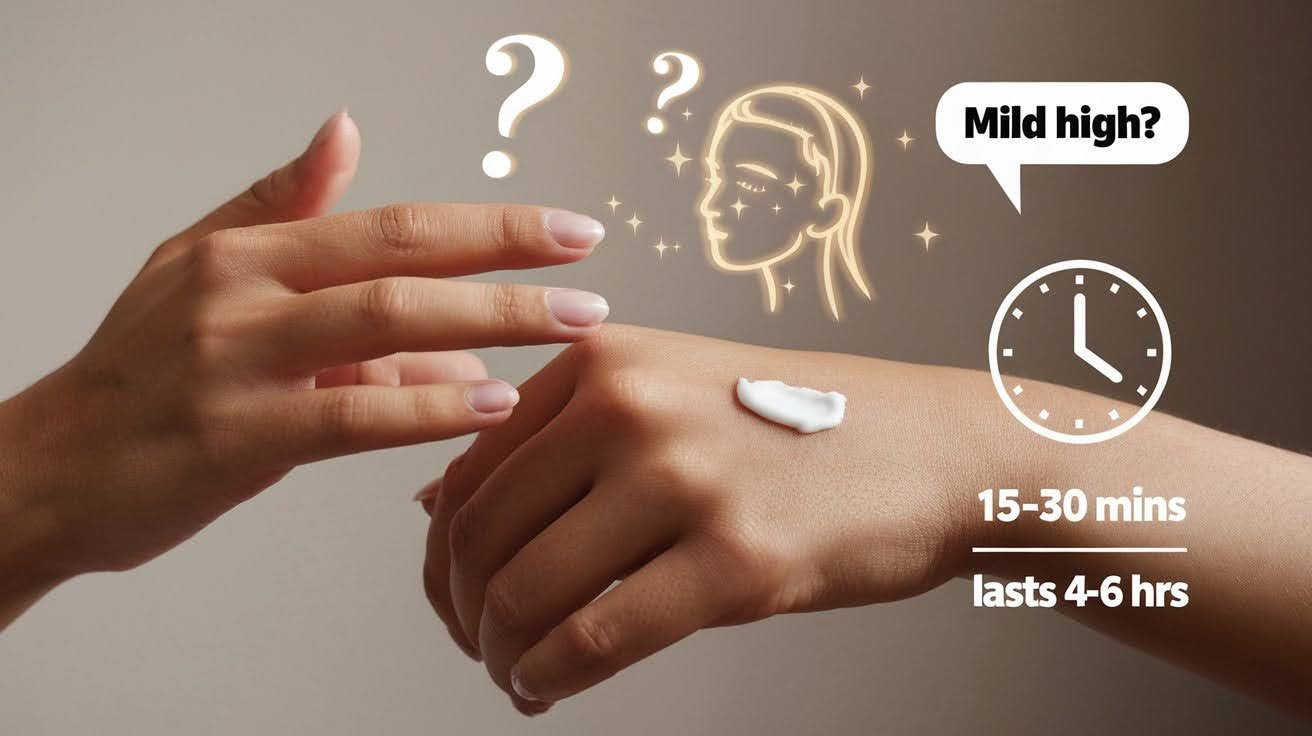
Here’s something weird. Some people report feeling mild euphoria from THC lotions. Not common, but it happens. Strong THC products seem to cause this more often. We’re talking about the potent stuff, not your basic pain cream.
But here’s the mystery: Is it real or in your head? Scientists aren’t sure if the THC gets into your bloodstream or if it’s just the placebo effect. Your skin plays a role, too. Individual skin permeability varies between people. Some absorb more than others.
Timeline matters if this does happen to you:
- Effects start in 15-30 minutes
- Can last 4-6 hours
- Usually very mild
Don’t panic if you feel slightly different. It’s rare and typically harmless. But good to know it’s possible.
Ingredient-Related Side Effects and Quality Concerns
The THC might not be your problem. Other ingredients often cause more trouble than the cannabis itself.
Non-Cannabis Ingredients as Primary Culprits
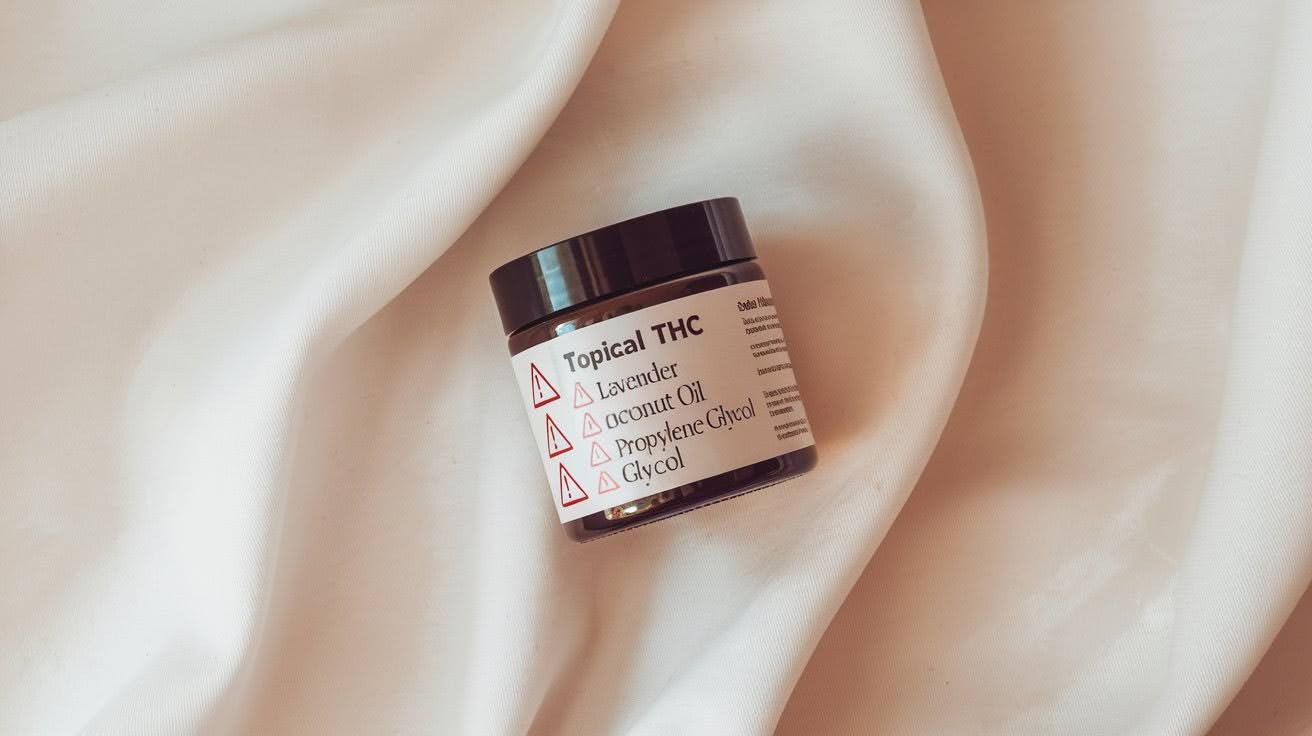
Essential oils and fragrances are the real troublemakers. Lavender, peppermint, and eucalyptus – these smell nice, but they can irritate sensitive skin. Preservatives and stabilizers keep products fresh. They also cause reactions in many people. Parabens, sulfates, and other chemicals can irritate your skin.
Here’s what catches people off guard: Common allergens hide in these products.
Watch out for:
- Coconut oil (yes, even natural ingredients cause problems)
- Lanolin from sheep
- Propylene glycol
- Artificial colors
Read those ingredient lists carefully. The fancy marketing doesn’t reveal what’s truly inside. That “all-natural” label means nothing if you’re allergic to natural ingredients.
Product Quality and Contamination Risks
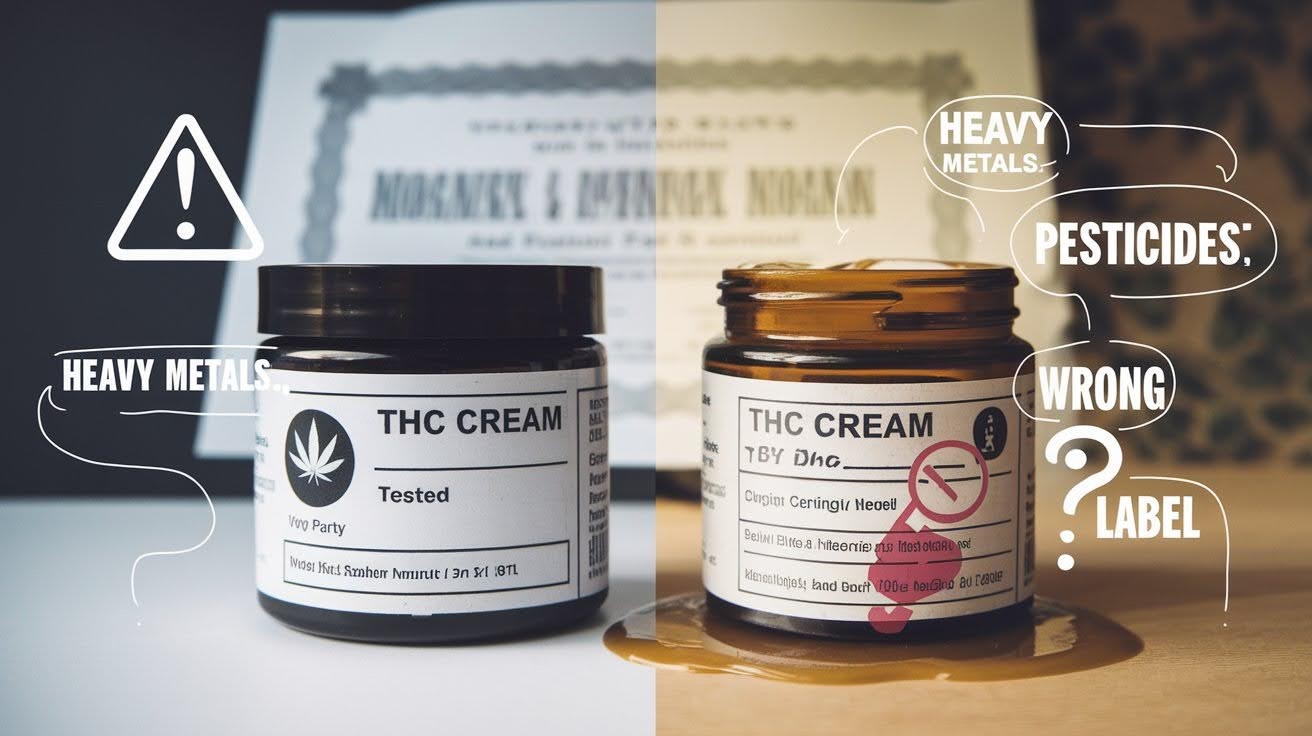
This gets scary fast. Product quality varies wildly in this industry. Mislabeling is a huge problem. A 2022 study found that 72% of topical cannabinoid products had wrong labels. Think about that – nearly three out of four products lied about what was inside.
Contamination happens more than you’d think. Pesticides, heavy metals, and other nasty stuff end up in products. Your skin absorbs these toxins directly. Regulatory gaps make this worse. Nobody’s watching these companies closely enough. The rules are loose, and enforcement is weak.
Third-party testing saves you from bad products. Look for certificates of analysis. Real companies test their products and share the results. Don’t trust brands that won’t show you test results. If they’re hiding something, you don’t want it on your skin.
Your safety depends on doing your homework before making a purchase.
High-Risk Populations and Special Considerations
Some people need to be extra careful. Your medical situation might make THC topicals dangerous.
Individuals with Increased Vulnerability
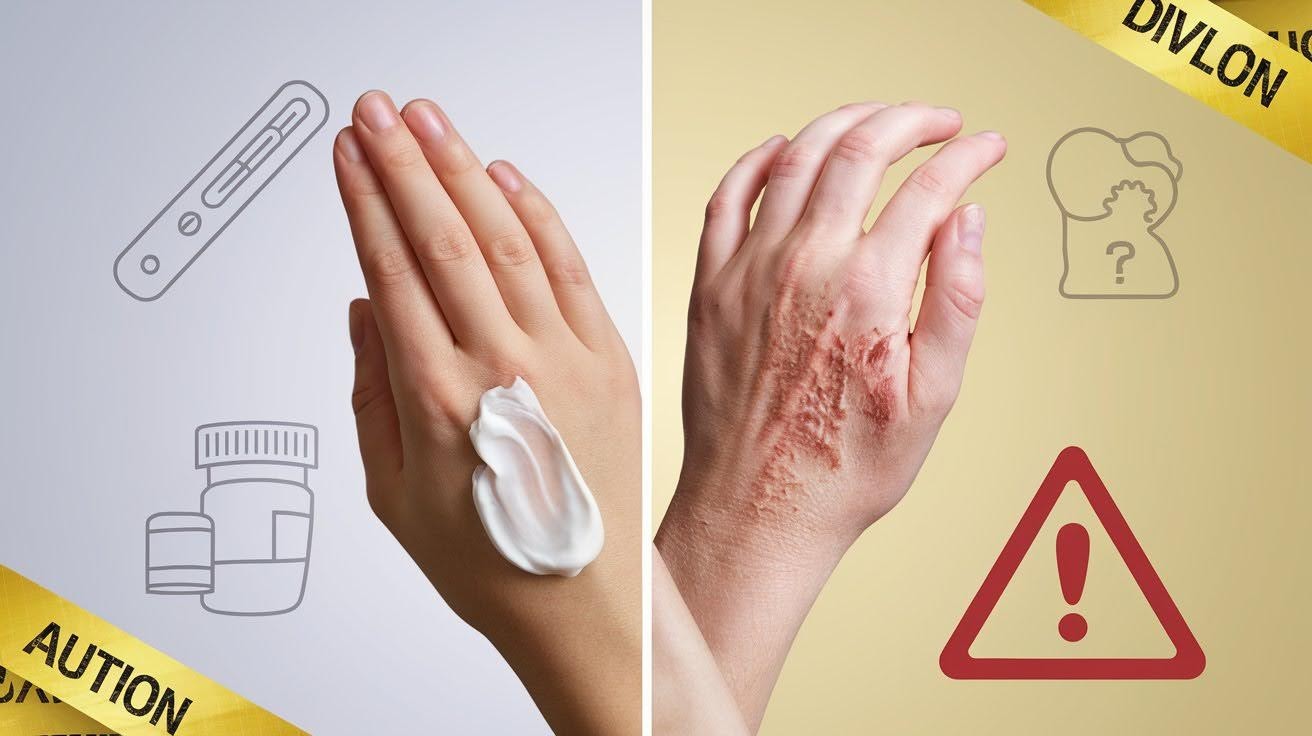
Compromised skin barriers increase the risk. Eczema, psoriasis, or damaged skin allows more chemicals to pass through. What’s safe for healthy skin might harm yours. Pregnant and breastfeeding women should avoid these products altogether.
We lack sufficient safety research. Why risk your baby’s health for pain relief? Blood thinners change everything. THC might interact with warfarin or other medications.
Even topical products can affect how your medicine works. Elderly users face extra challenges. Aging skin gets thinner and more sensitive. What doesn’t bother a 25-year-old might cause severe reactions in a 75-year-old.
Your age matters more than you think.
When Extra Caution is Needed
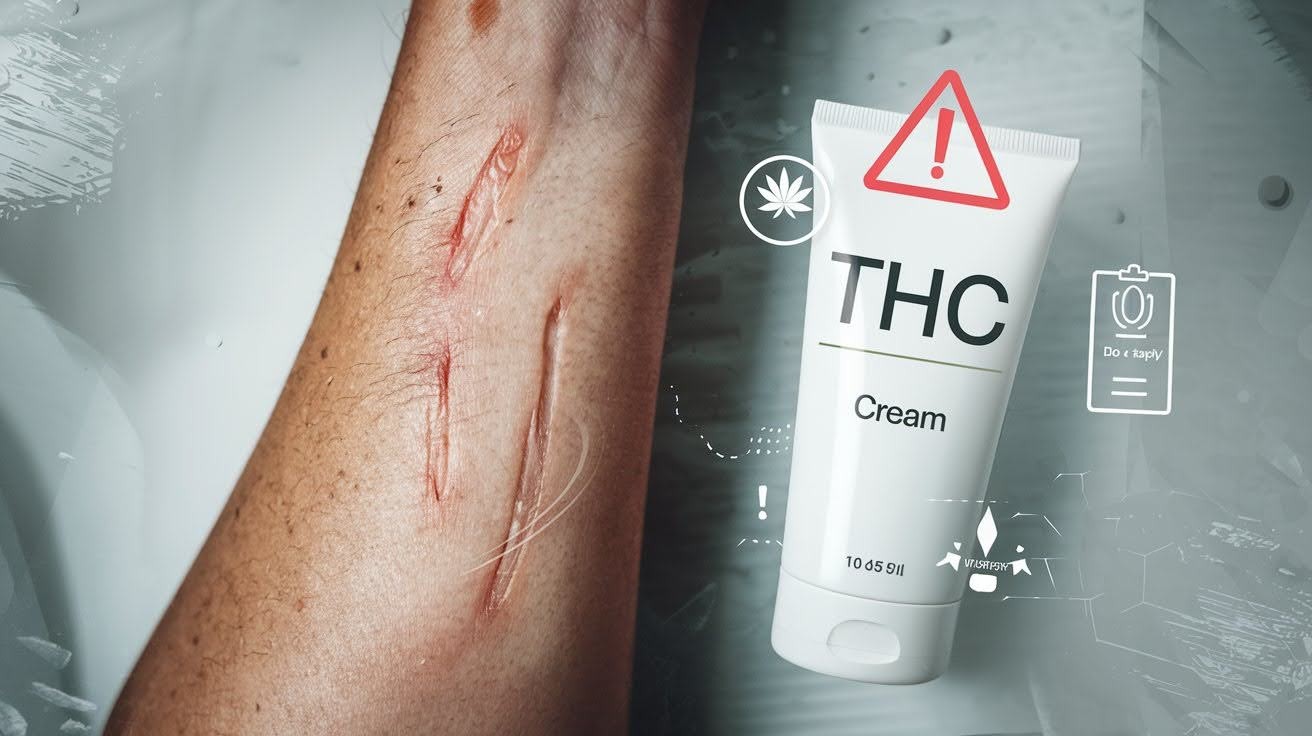
Cannabis allergies are real. Some people react badly to any cannabis product. If marijuana smoke makes you wheeze, topical THC might cause skin problems. Multiple topical medications create problems. Mixing THC cream with prescription gels or ointments? Nobody knows what happens.
Drug interactions occur on your skin, too. Broken or damaged skin absorbs everything faster. Cuts, scrapes, rashes, or irritated areas let THC enter your bloodstream more easily. Never apply to open wounds. This includes:
- Fresh cuts
- Burned skin
- Active rashes
- Cracked or bleeding areas
Talk to your doctor first if any of these situations apply to you. Better safe than sorry when it comes to your health.
Comprehensive Risk Minimization Strategies
Clever use prevents most problems. Follow these steps to stay safe.
Safe Application Practices
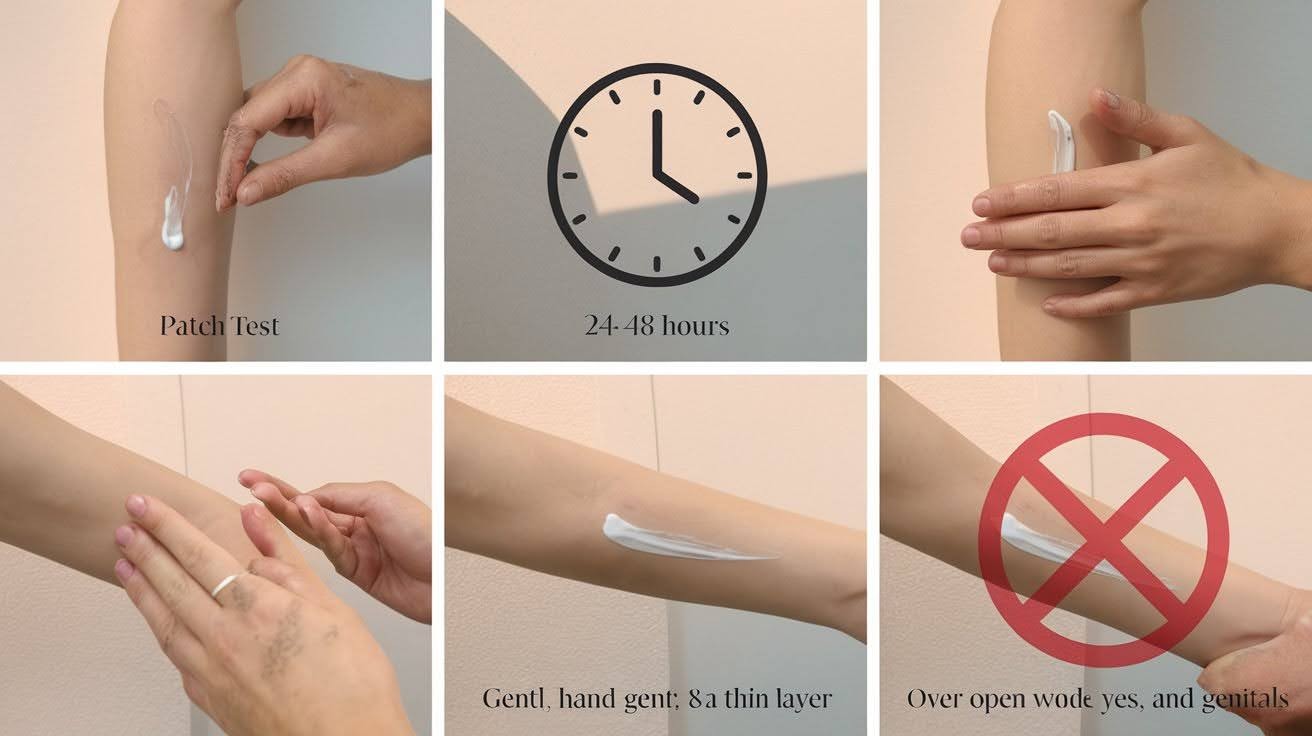
Start with a patch test. This step saves you from significant reactions later. Here’s how to do it right:
- Apply a tiny amount to your inner forearm
- Wait 24-48 hours
- Watch for redness, itching, or swelling
- No reaction? You’re probably safe to use more.
Begin with the smallest effective dose. Don’t slather on thick layers right away. A thin coating works better than you think. A gradual increase prevents problems.
Use a small amount for a few days. If it helps and doesn’t irritate, use a slightly more generous amount. Proper application technique matters. Clean your hands first.
Apply gently without rubbing hard. Wash your hands afterward to avoid accidentally touching your eyes. Frequency limits keep you safe. Start with once daily maximum.
Some people need breaks between applications. Avoid these areas altogether:
- Open cuts or wounds
- Inside your mouth or nose
- Around your eyes
- Genital areas
- Any broken or irritated skin
Mucous membranes absorb too much. These areas allow chemicals to enter your bloodstream more quickly than regular skin. Sensitive areas are more susceptible to irritation from topical products. Play it safe and stick to tough skin areas, such as the arms and legs.
Product Selection Guidelines
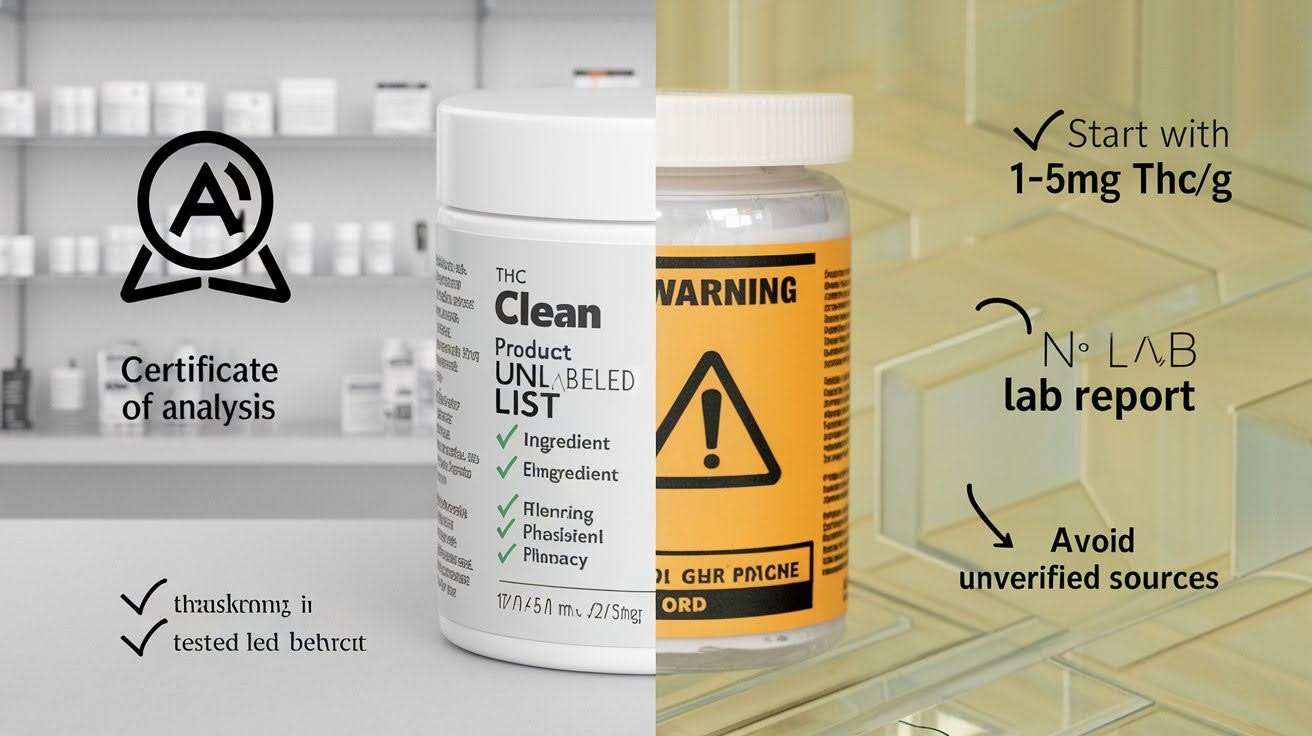
Third-party testing is non-negotiable. Don’t buy products without certificates of analysis. These documents prove what’s actually inside the bottle. Real companies test for:
- Exact THC amounts
- Pesticides
- Heavy metals
- Harmful bacteria
No certificate means no purchase. It’s that simple. Understanding concentration levels protects you from surprises. Start with products containing 1-5mg THC per gram. Higher concentrations increase side effect risks.
THC content should be clearly labeled. Vague terms like “hemp-derived” or “full spectrum” don’t tell you enough. You need exact numbers. Avoid products with excessive additives. Long ingredient lists mean more chances for reactions. Simpler formulations work better for sensitive skin.
Unknown ingredients are red flags. If you can’t pronounce it or research it, don’t put it on your skin. Reputable sources matter most. Licensed dispensaries follow safety rules. Gas stations and random websites don’t.
Check your state’s licensing database. Verify the dispensary is legal. Fake licenses exist everywhere. Online reviews are helpful, but they don’t replace proper testing certificates. People lie about products working. Lab results don’t.
Recognizing and Managing Adverse Reactions
Bad reactions happen fast. Be aware of what to watch for and know how to respond.
Identifying Side Effects Early
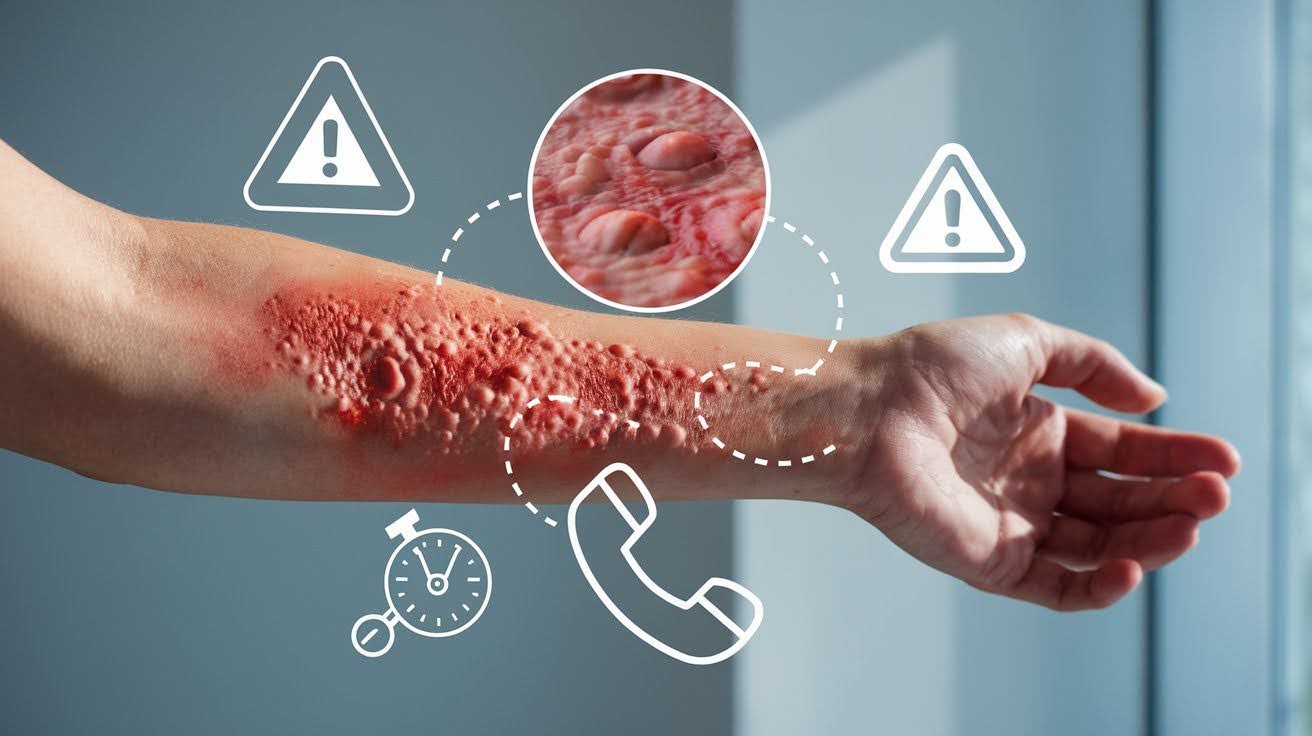
Common warning signs show up within hours of application:
- Red, inflamed skin
- Burning or stinging sensations
- Itchy patches that won’t stop
- Small bumps or blisters
Normal sensations feel different. Mild warmth or tingling is usually okay. Sharp pain or intense burning isn’t. First-time users need extra monitoring. Check the area every few hours for the first day. Take photos if you notice changes.
Immediate Response Protocol
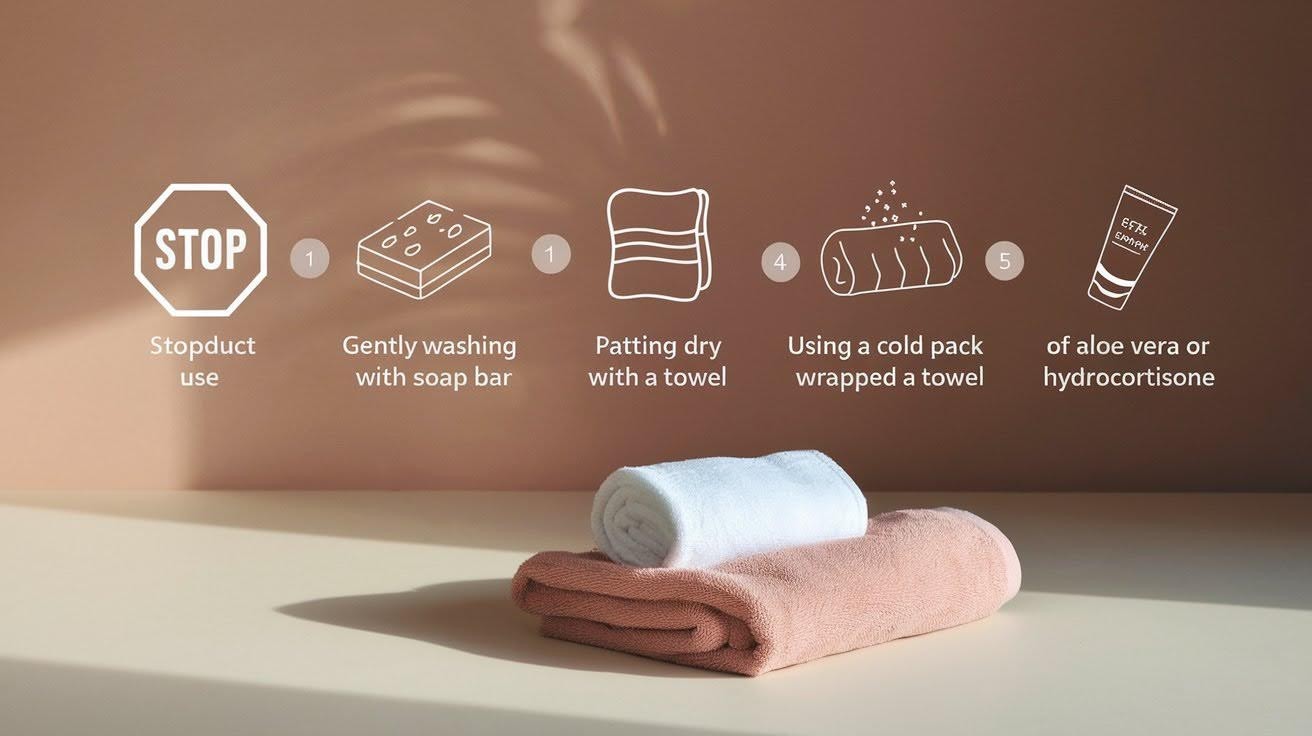
Stop using the product immediately if you experience any reactions. Don’t wait to see if it gets better. Gently clean the affected area with mild soap and cool water. Pat dry – don’t rub.
Cold compresses help reduce inflammation. Apply for 10-to 15-minute sessions at a time. Wrap ice in a towel to protect your skin. Over-the-counter treatments can provide relief:
- Hydrocortisone cream for itching
- Aloe vera gel for burning
- Antihistamines for allergic reactions
Document everything. Take photos of the reaction. Write down when it started and what you used. Your doctor will need this information.
When to Seek Medical Attention
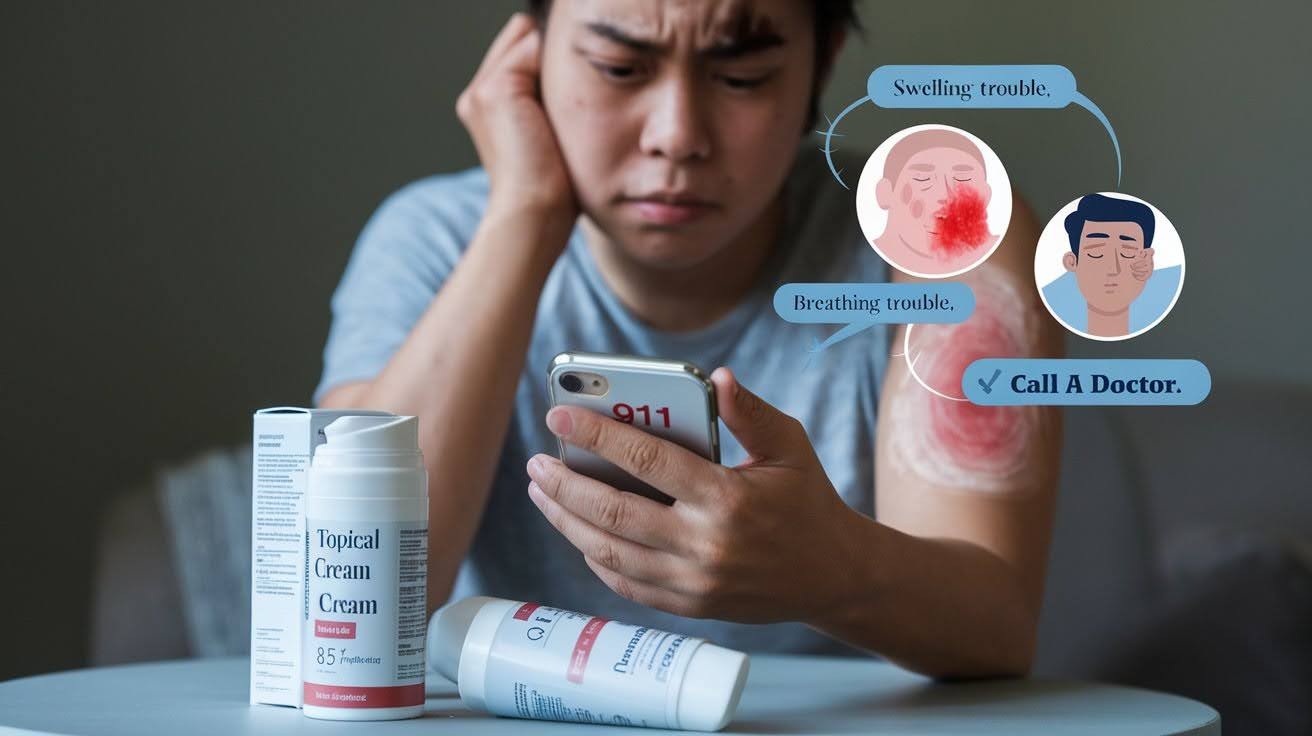
Call 911 for severe allergic reactions:
- Trouble breathing
- Swelling of the face or throat
- Widespread rash spreading rapidly
- Dizziness or fainting
See a doctor for persistent symptoms that don’t improve after 24-48 hours. Getting worse instead of better? Don’t wait. Unexpected systemic effects need medical evaluation. Feeling dizzy, nauseous, or confused from topical products isn’t normal.
Report adverse events to both the manufacturer and the FDA. Your experience helps protect other people. Most companies have customer service lines for reporting problems. Keep all product packaging until you’re sure it’s safe. Doctors need to know exactly what caused your reaction.
Conclusion
Topical THC side effects are manageable when you know what to expect. Most people experience only mild skin reactions, if any. The key is starting smart: patch test first, choose quality products, and listen to your body. Read those ingredient labels carefully – often it’s not the THC causing problems.
You now know how to use these products safely and effectively. You are aware of the warning signs to watch for and know when to seek help. Your health comes first. If something doesn’t feel right, trust your instincts and discontinue use of the product.
Have questions about your specific situation? Drop a comment below. And if this helps you make a safer choice, share it with friends who might also benefit. Stay informed, stay safe.
Frequently Asked Questions
What are the most common topical THC side effects?
Skin irritation, redness, and itching at the application site are the most frequent symptoms. Allergic reactions to other ingredients, such as essential oils or preservatives, also occur commonly.
Can topical THC products make you fail a drug test?
Generally, no, but frequent use of high-potency products may cause trace amounts to enter your bloodstream. Risk is low but not zero.
How long do topical THC side effects last?
Most skin reactions resolve within 24 to 48 hours after discontinuation of use. Severe allergic reactions may take longer to resolve and may require medical treatment.
Who should avoid using topical THC products?
Pregnant women, people with compromised skin conditions, those taking blood thinners, and anyone with cannabis allergies should avoid these products altogether.
How can I prevent side effects from topical THC?
Always patch test first, start with low concentrations, choose third-party tested products, and avoid applying to broken or sensitive skin areas.




